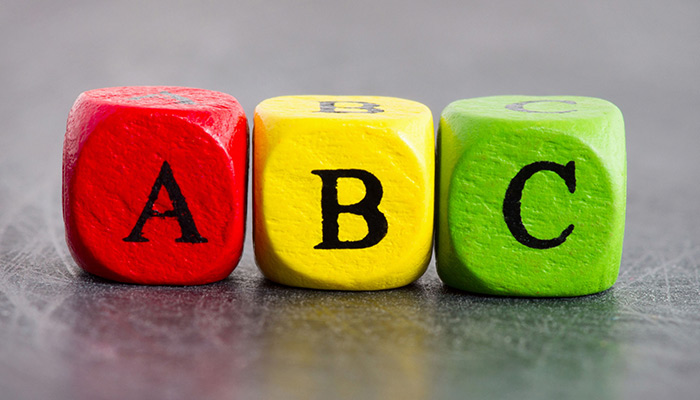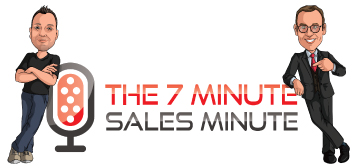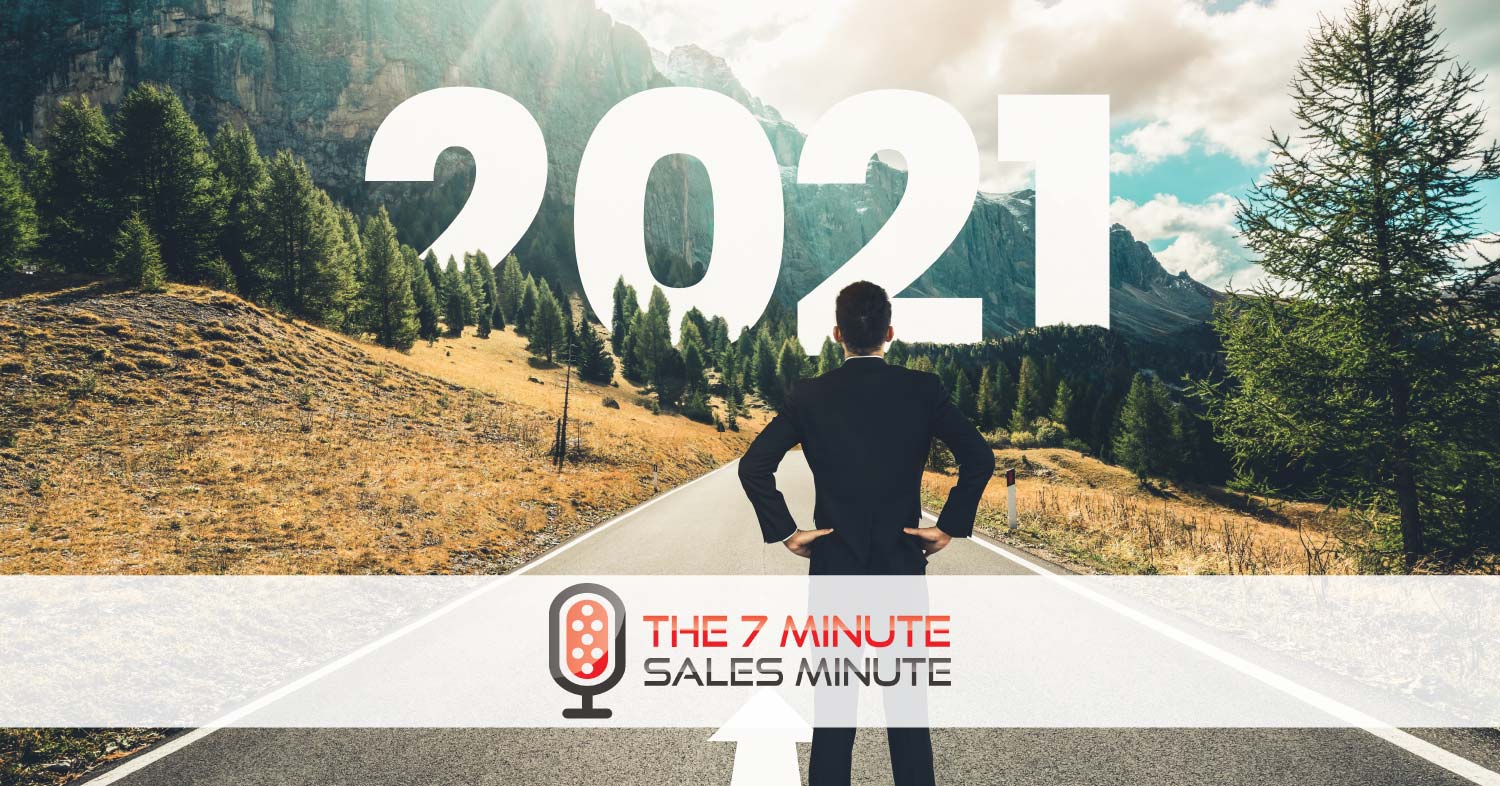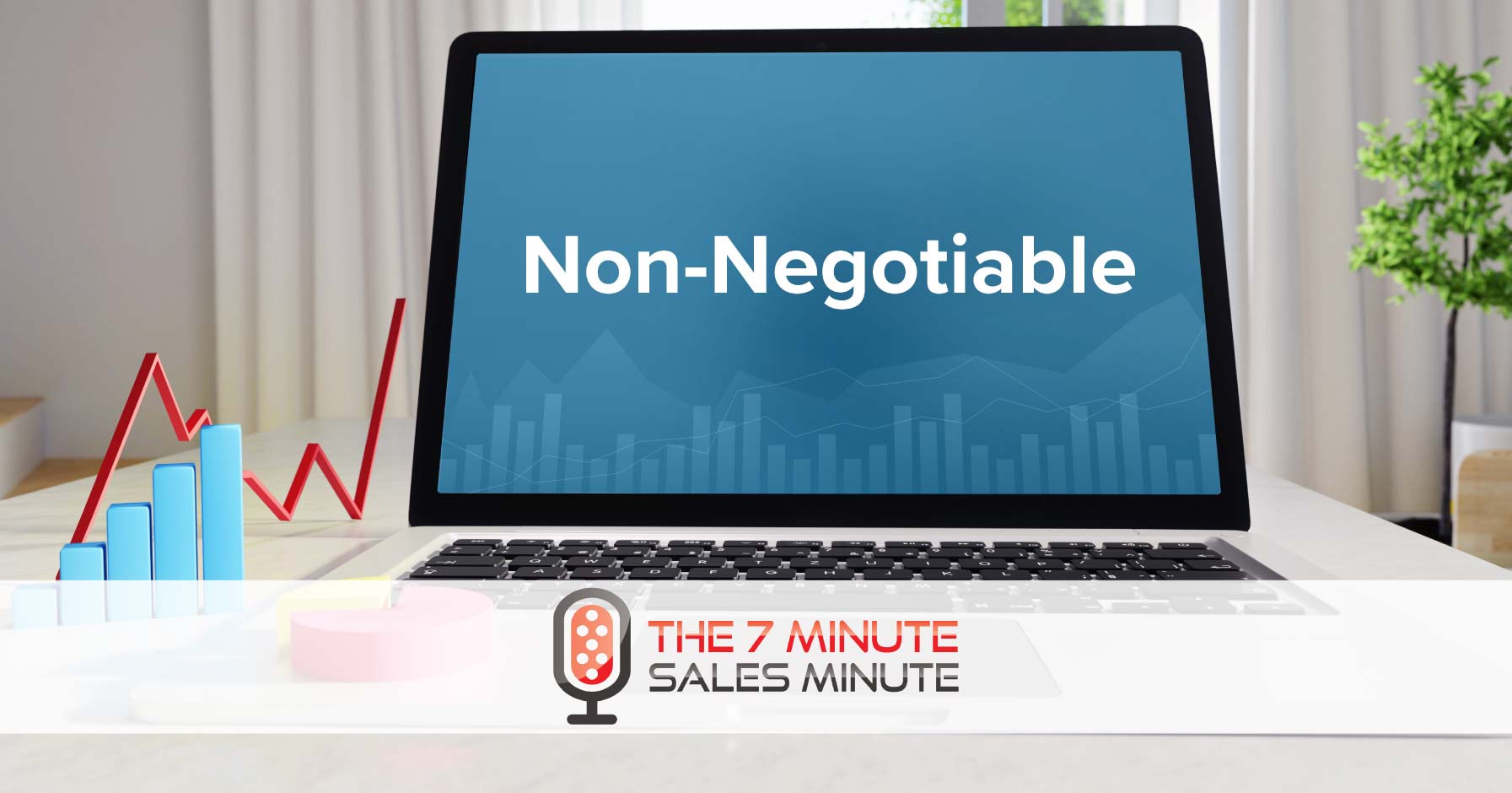
In this episode, the fellas go over “The ABC’s of Selling”. It’s so elementary, do you know your ABC’s?
Check us out at www.JonDwoskin.com and www.30MinuteSalesCoach.com for even more great content!
You can find Scott’s book on Amazon: Sell Smarter: Seven Simple Strategies for Sales Success.
Read the transcript
Jon: I’m Jon Dwoskin.
Scott: And this is The Seven Minute Sales Minute.
Jon: Welcome everybody.
Scott: Good morning, Jon.
Jon: Scott, good morning. How are you?
Scott: I’m doing great. It’s a beautiful day here in Detroit.
Jon: It is. In the D.
Scott: In the D. Today folks, welcome to a very special episode of The Seven Minute Sales Minute. Today we’re going to talk about the seven ABCs of selling.
Jon: I love it. We are going back to kindergarten.
Scott: Exactly. We’ve all heard about the first one. I mean let’s say it out loud. Everyone say it together: Always be closing. That one is easy, but there are six more so we are going to go over them with you.
Jon: I wonder if anybody has ever even heard of the other six.
Scott: I don’t think so.
Jon: I don’t think so either, and the reason nobody has ever heard of the other six is because they are a Scott and I original.
Scott: Yes. It’s the original recipe.
Jon: Much more Scott. It was actually Scott’s idea.
Scott: Kind of. Yes. This is the original recipe here folks. Lots of herbs and spices went into these seven ABCs. So without further ado, number one is simple. We just talked about it. Always be closing. You should always be moving yourself forward. You should always be moving towards getting people to sign on the dotted line.
Jon: Scott, we’ve talked a lot about closing in past podcasts, but I think sometimes sales people – I shouldn’t say sometimes – many times sales people stop asking for the close. They ask once, they ask twice, they ask three times, and then they stop. To me you should have in your toolbox that you have six to ten ways to ask for the close without feeling cheapened or like, I’m using the Yiddish word, chazer, which is, I don’t know. To define that is you don’t want to feel cheap, or like a mooch. How do people get six or seven ways to close?
Scott: Practice. I mean plain and simple.
Jon: Yes.
Scott: I mean we’ve talked about it in the past, when you find something that works, reuse it. Yes. You should always be moving forward. We talk about selling not being a back and forth conversation. It shouldn’t be verbal ping pong. You should have the client, you should have your arm around the client’s shoulder moving them forward, taking steps because if you’re going back and forth no one is getting anywhere, but if you’re aligned with the client and you’re moving them forward, you can always be closing. Because everything you do is working towards that end.
Jon: I’m going to give an action item right now, because you said the magic word: Practice. You can listen to this. You can agree with it. You could disagree with it too. If you do, that’s fine. You’re wrong, but that’s fine. You got to practice. You got to commit. I’m asking everybody. Take five minutes a day and practice your closing techniques. Role play with somebody in your office. Role play with your manager, your colleagues, whomever. But, you got to practice.
Scott: When you do practice, take it seriously.
Jon: Take notes.
Scott: Exactly, and learn what works and what doesn’t. What’s our next one, Jon?
Jon: Our next one is always be cognizant.
Scott: What do we mean by that?
Jon: We mean that you tell them.
Scott: Always be cognizant. Another one of those Gerhard words as we call them.
Jon: Yeah. Mister Gerhard.
Scott: For folks who remember our great grammar teacher in high school.
Jon: He was great.
Scott: Always be cognizant. Always be aware of what’s going on. Always be aware of changes in the market. Always be aware of what’s going on with your clients. Always be aware of what’s going on with your products. Always be aware of what’s going on. Simple things like the weather where your client is, if your client is in a different city. Always be aware of everything that’s going on around you.
Jon: When I had my internet company there was a sales guy, his name was Jeff, and he always used the word cognizant. Every other word was, “Oh, I was cognizant here. I was cognizant there.” He was a good sales guy though. He really was very cognizant, and being cognizant of what is about to happen, forecasting and projecting of where your client is thinking before they’re even thinking or taking them on the journey and the line of questioning which is so important when it comes to closing, asking people questions, and be cognizant of where you want to take them, and then, like you said, guide them there.
Scott: Right. It’s so funny that you talked about the cognizant word being used over and over again. It’s a pet peeve. I’ve actually been kind of bringing out of people lately is the word “caveat”, like people overuse that word. It drives me nuts.
Jon: I haven’t used that word in a long time.
Scott: Like the caveat here, the caveat here. It drives me crazy. Because most people are using it wrong anyway, but it’s a cheap word.
Jon: The footnotes.
Scott: Yes. It really is. It’s a totally cheap word.
Jon: One of the things that’s been getting to be a pet peeve of mine is when people say “at the end of the day”. At the end of the day …
Scott: I think Madonna brought that to the US. I think she did.
Jon: My sister’s boyfriend uses it, and so sometimes I start saying it and my kids will say, “Dad, enough with the at the end of the day.”
Scott: Save it until the end of the day, kid.
Jon: All right. What’s next? Number three.
Scott: Always be courteous.
Jon: Very important.
Scott: Yeah. Absolutely. We should always be courteous with our clients and our customers, our prospects, anyone we’re dealing with in business. Why not? Especially when we’re dealing with electronic forms of communication like email and things like that. We want to make sure that we add the P’s and Q’s. Always use that please and thank you because tone is lost in a lot of things and if we’re just too direct sometimes, people are going to think we’re dicks.
Jon: You know what, you bring up this is, you know, being courteous in today’s world specifically the millennial generation who was raised on technology, electronics and hundred-and-forty-character ways of communication, and we’ve talked about this. Thank you notes and being appropriate in sending emails and follow-up calls and not taking things for granted and talking to people in a slang way or in abbreviated ways always. The pleases and thank yous should never go away.
Scott: Right. That should be obv to a lot of the folks that have been around for a while.
Jon: Please is P-L-S or P-L-Z now, and thank you is T-Y.
Scott: Yeah. It’s crazy. It’s a lost art, definitely, and if you think about just how much people will respect you for you saying thank you, thanking them for the time, thanking them for talking to you, thanking them for the business, sending that thank you card. No one does that anymore. It’s huge.
Jon: I don’t want to repeat exactly what you just said, but I’m kind of going to. The word thank you is critical to anyone’s success. There’s nothing more frustrating than doing something for somebody and them not … You don’t expect anything in return but you do expect a thank you. If somebody goes out of their way or a client does, just don’t forget to say thank you.
Scott: All right. Next.
Jon: Changing. Always be changing. You got to always be growing and changing and growing your game and evolving yourself and evolving your mindset and evolving your skillset, and evolving your best practices. You got to be changing and keeping up with the times, and you can’t become – this actually is not one of the C’s – complacent.
Scott: I like that.
Jon: That’s a good one.
Scott: Jon, you should be cognizant of your complacency.
Jon: Yeah. Sometimes I wish I could be complacent, and I don’t have a complacent bone in my body.
Scott: I’ll loan you one.
Jon: You got to always be changing with the times, and if you want to grow, you got to change and grow.
Scott: Absolutely. You should not just be standing still. The market is going to be changing. Your clients’ needs are going to be changing. You need to change with them.
Jon: Right. Ways of your client picking up on your change is asking really good questions.
Scott: Which brings us right to our next one.
Jon: What is our next one? Always be curious. I was watching an interview once with Diane Sawyer and she was talking about the secret of her success, and why she is so good at what she does. What she talked about is that she always wakes up and she’s curious, and she wants to know what’s going on in the world and the impact that she can have in it, and I thought it was a fascinating comment. Because you always want to be curious as far as how you can grow and how you can help other people grow.
Scott: Exactly. When it comes to dealing with your clients, you should always be curious. I always tell people that I’m working with, if for some reason you get stuck and you don’t know what to ask a client, just ask them why.
Jon: Ask them why. In this same interview Diane Sawyer talked about that she would come home and her dad would not say to her, “What did you learn today?” Her dad would say, “What good questions did you ask?”
Scott: I like that.
Jon: Isn’t that good?
Scott: Yeah. That’s very cool.
Jon: We should hashtag Diane Sawyer when we promote this because it was that good of an interview.
Scott: All right. Cool. I like it.
Jon: It’s true. When you ask good questions people know that you’re changing because you’re setting the tone of change.
Scott: Right, and you’re finding out when you’re dealing with a prospective client, you’re finding out why they want your product. You might think you know why upfront because the last person wanted it for a similar reason, but asking the client why, you’ll get to know them and they’ll give you the key to their lock, so to speak.
Jon: Getting to the why, and I can’t remember. I think we’ve talked about Simon Sinek.
Scott: Probably at some point.
Jon: His Ted Talk on why is unbelievable, so Google it, watch it. It’s actually on my website jondwoskin.com with no H, under Jon’s Favorite Things, under my favorite Ted Talks, not to promote myself, but it’s at-
Scott: What’s that website, Jon? Jondwoskin.com.
Jon: No H.
Scott: No H.
Jon: It’s under my favorite things in my Ted Talk, or you can just go to YouTube and Google it.
Scott: I like it.
Jon: All right, so what’s next, Scott?
Scott: Always be a chameleon. Kind of fits in with always be changing, but it’s a little bit different because you want to make sure that you adapt to your surroundings. You don’t want to dumb yourself down for somebody, but also know your audience.
Jon: Don’t be phony. I think we need to define that. Because sometimes you see people, let’s just say, in a social setting and they’re social climbers, and you will say, “Oh, that person is such a chameleon.” We’re talking about it in a positive way. You got to mirror your clients. You got to be able to, you know, if you’re working with a million dollar client versus a five million dollar client, versus a twenty million dollar client, you got to become a chameleon and live in that world, and ask those types of questions, and you just have to kind of morph into a different type of person. You can’t treat everybody the same.
Scott: Exactly.
Jon: Right. There’s certain words that you can talk to a ma and pa that when you’re talking to an institution it just changes.
Scott: Exactly, and if you’re talking to a mom and pop, they might actually know more than the people at the large institution, so you want to make sure you’re curious and asking them the right questions.
Jon: Ma’s and pops are smart people because they’re gritty and they’ve had to wear all the hats. All right. The next is to stay calm.
Scott: Yes. Always be calm.
Jon: Calm.
Scott: Yes. Keep calm and do whatever the sign says. There’s a million of them. Always be calm. You should not freak out. Don’t panic. If a client says no, the next client might say yes or the next client will say yes. Someone is going to say yes. If you don’t have the business that you expect on Friday, freaking out isn’t going to help you. Regroup and come back on Monday. Figure out what you can do to better yourself, but don’t panic.
Jon: A way that you can do this is count to three. I say this because when you, you know, we’re talking about the ABCs, and so let’s talk about the 123s. We’re really going kindergarten fundamentals here, because if in a sales position if somebody asked you a question and you don’t know the answer or you need time to process the answer, the appropriate amount of time to respond to someone is three seconds. You have three seconds to respond. It seems like a lot of time but it’s not, so just take a deep breath, count to three in your head, collect yourself, and then respond.
Scott: I love it.
Jon: It’s a way to help you keep calm. It kind of gets you into a meditative state as well.
Scott: Yeah. Absolutely. If you think about something we talked about before is, are you actually listening or are you just waiting for your turn to speak. Counting to three helps you. If you find yourself with an answer locked and loaded and you stop listening to what your client says, stop doing that. Listen to what the prospective client says, calmly process it, and then answer.
Jon: Amen. I agree with that.
Scott: Let’s be very calm and cognizant, and curious, and be a chameleon, always be changing, let’s always be courteous with our clients, and always be closing.
Jon: I mean I think that was a great episode.
Scott: Absolutely.
Jon: That was great. Take this and enjoy it and thank you so much for listening. We appreciate you taking time and have an amazing day.
Scott: Now that we’ve done the ABCs, Jon, I definitely need a nap.
Jon: Thanks everybody for listening. Now, no excuses. It’s time to put everything you listened to into action. Stop lying to yourself. Stop listening and doing nothing with this information. Take this information, implement it into your day, grow your business, grow your sales, make more money, have more fun, have a better life. Period. The end.
Scott: What he said.




